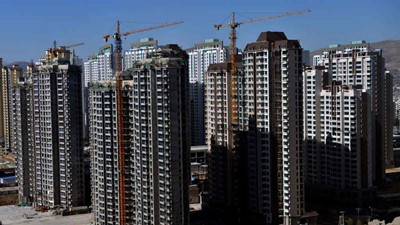The results of this two-tier system have been meagre so far. The frenzy in the biggest cities stems from the central bank’s steady loosening of monetary policy over the past 18 months. Although warranted from an economic perspective, it was inevitable that low interest rates would drive asset prices higher. Initially, much of the credit pumped out by banks ended up in the stockmarket, but following its crash last summer, property beckoned as one of the few decent investment options in China (capital controls, which have been further tightened recently, make it hard for Chinese savers to invest their money abroad).

For speculators looking at property, the excess supply in smaller cities was all too evident, so they turned instead to the megalopolises. Du Jinsong of Credit Suisse describes it as a form of groupthink. “Everybody—investors, developers, policymakers and bankers—thinks that first-tier cities are safe,” he says.
譯文屬譯生譯世











